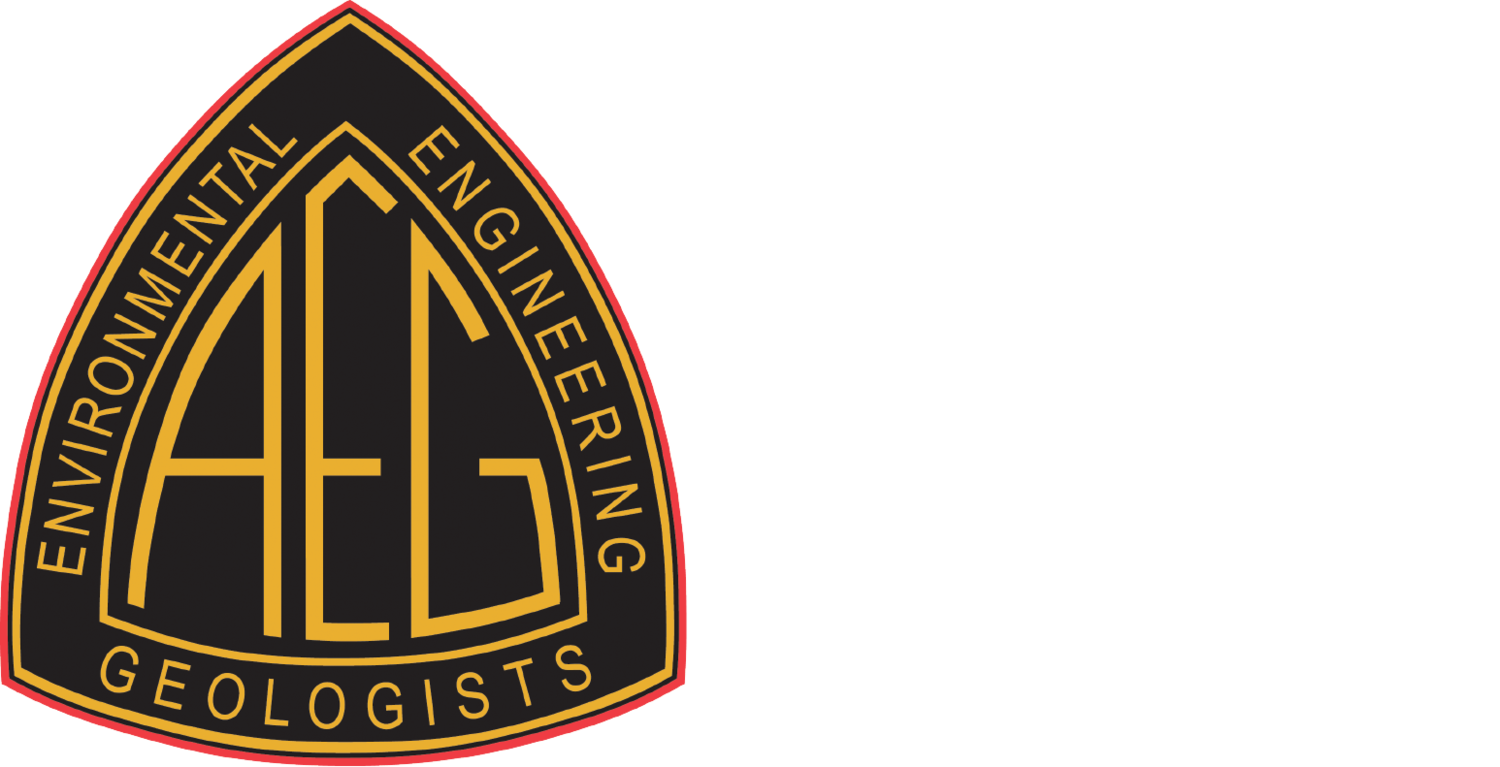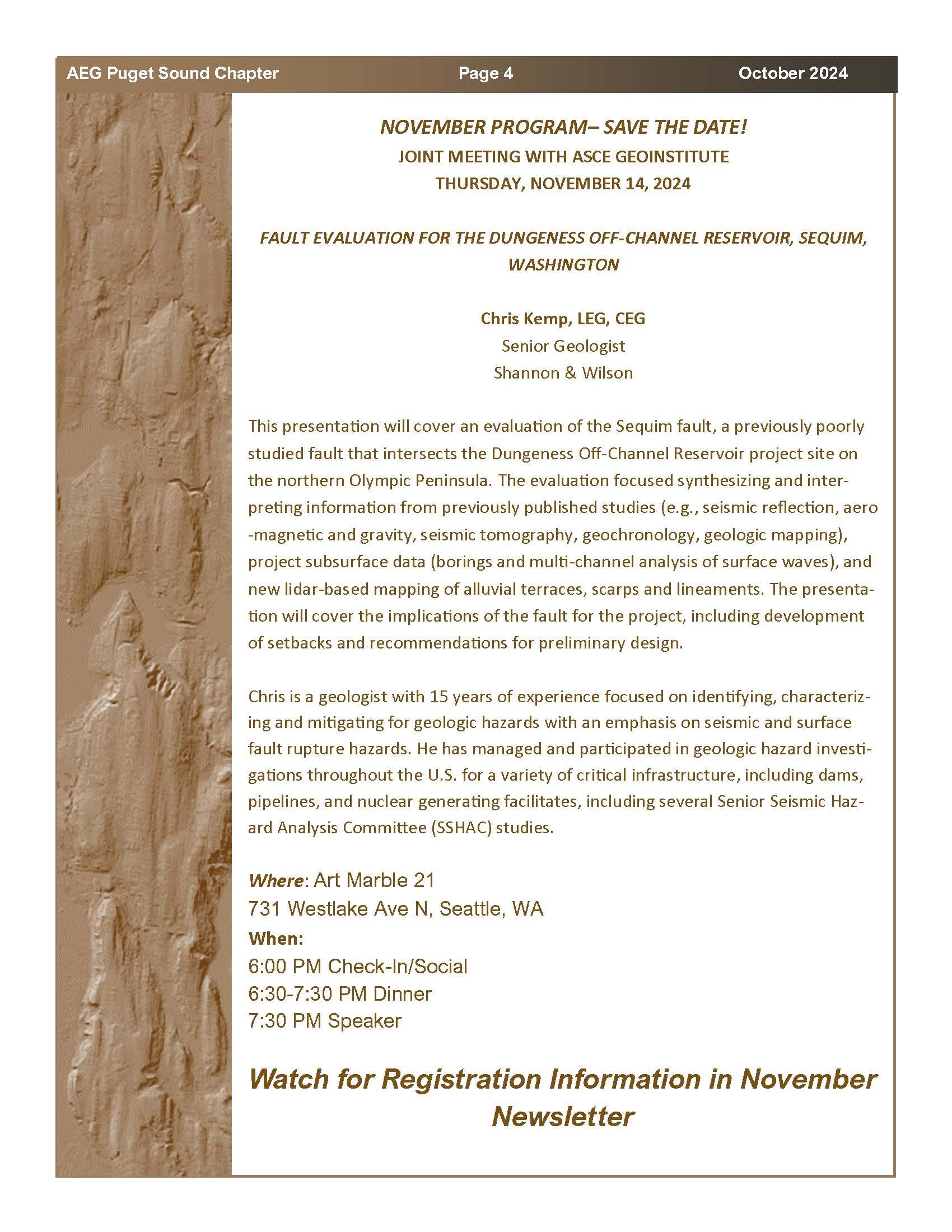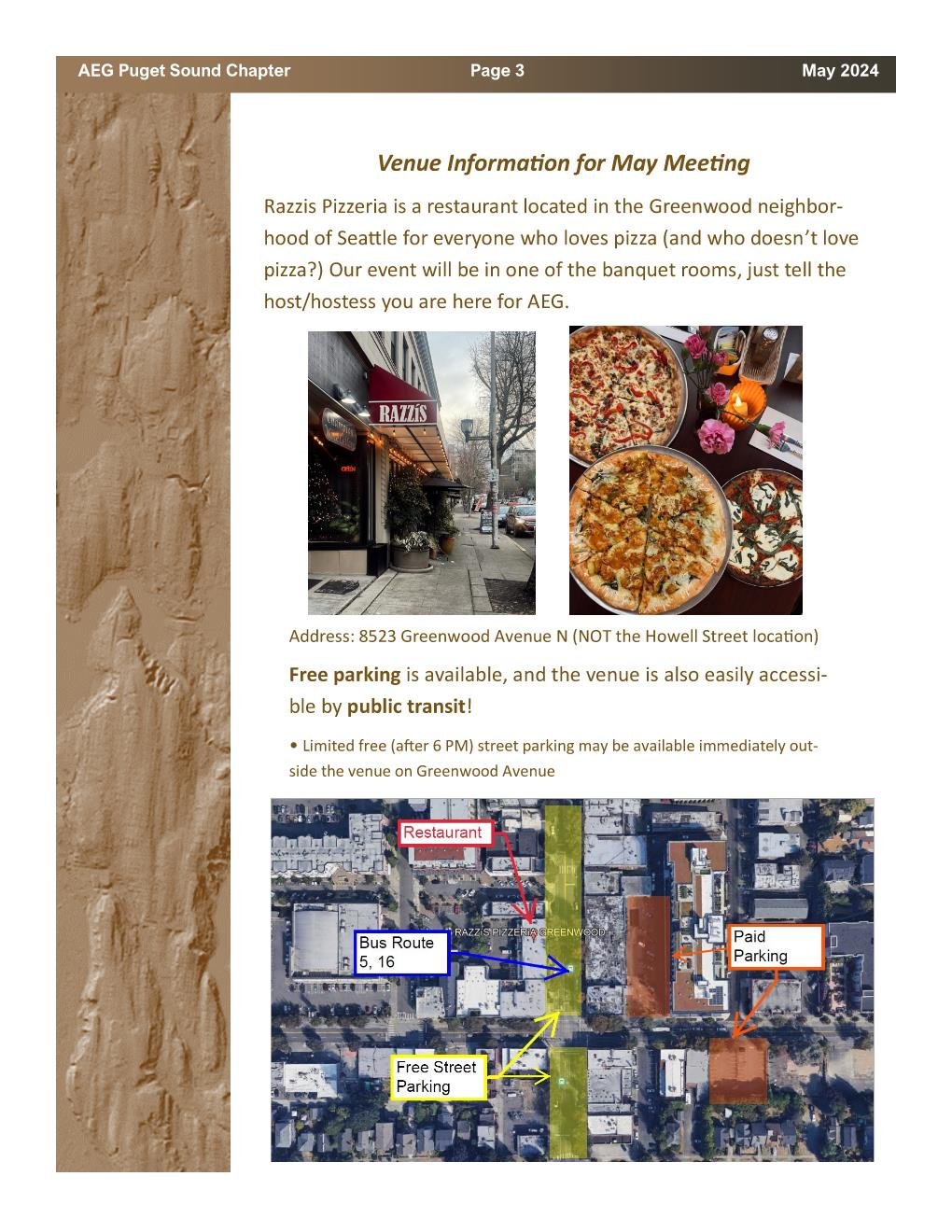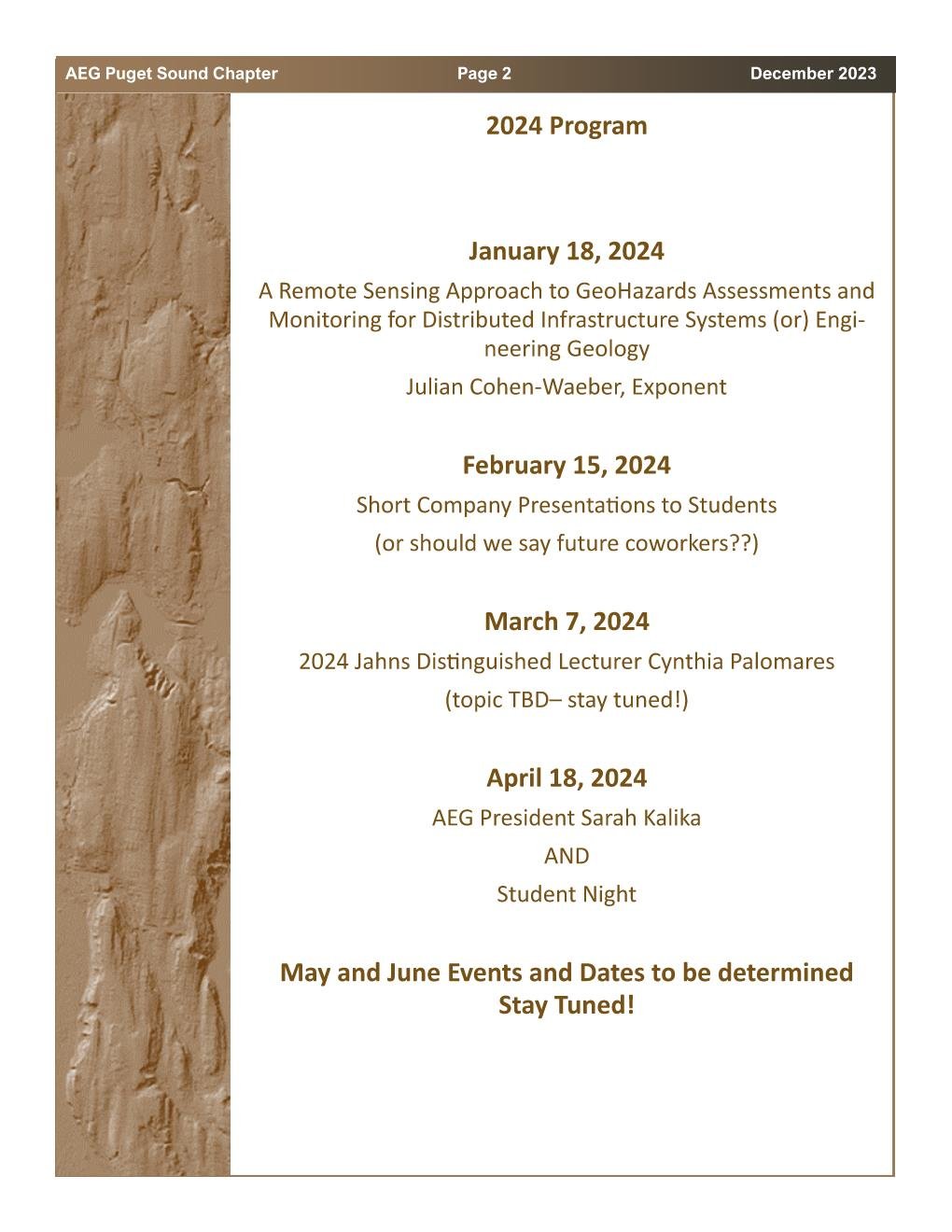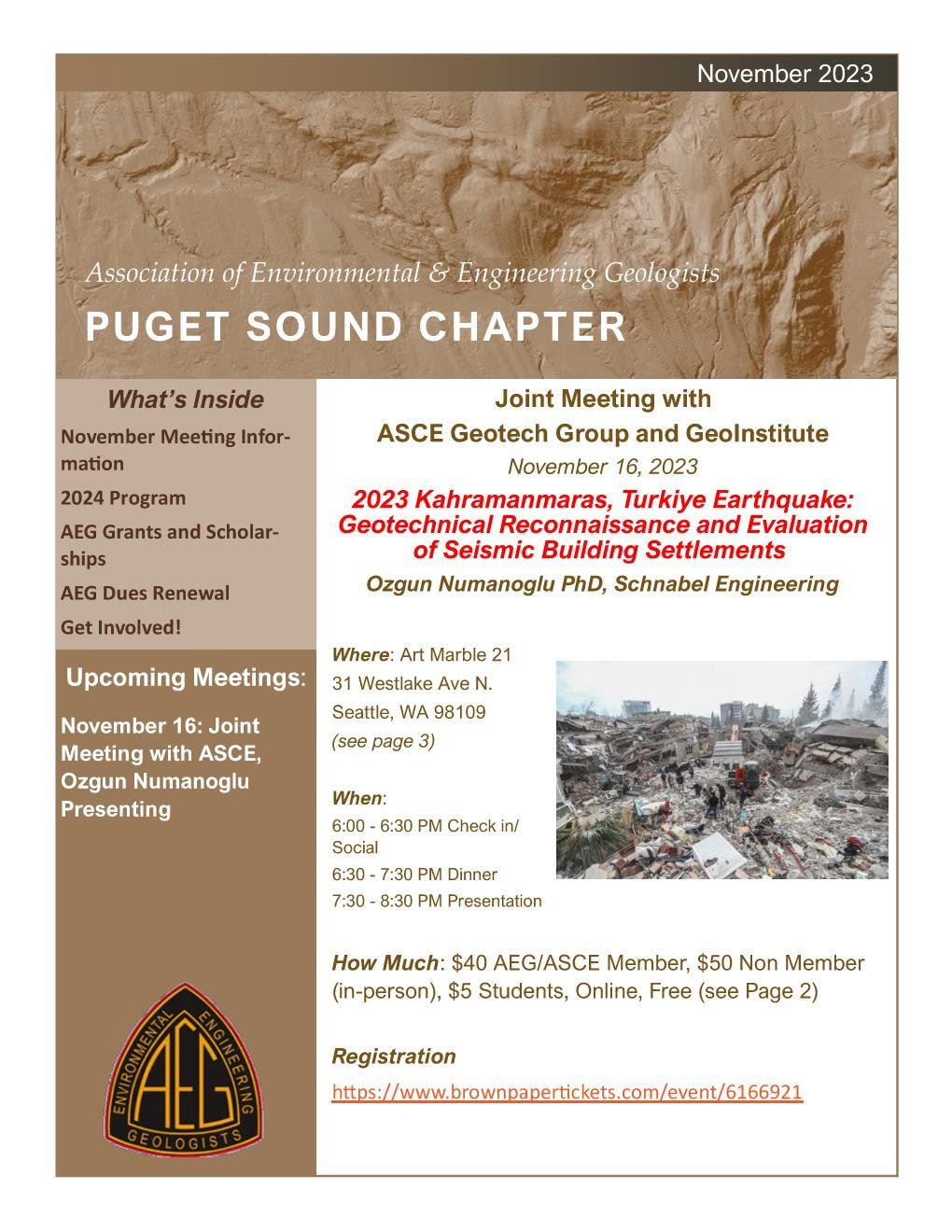February 2025 AEG Newsletter
Reminder! AEG Career Night Coming Up
January 2025 AEG Newsletter
December 2024 AEG Newsletter
Click here for the Brown paper Tickets link.
Teams Meeting is linked here.
AEG Foundation Grant and Scholarship Website.
Please visit the Job Postings page for clickable links.
October AEG Newsletter (Corrected)
Please click here for an active registration link: Brown Paper Tickets
Follow this active link for the Zoom meeting
Please follow this link to go to the AEG Foundation Scholarships
Follow the link below to go to the Job Openings Page:
Summer 2024 AEG Newsletter
May AEG Newsletter
Hiring 3 Geologic Mapping Assistants - Washington DNR
April AEG Newsletter
March AEG Newsletter
February AEG Newsletter
January AEG Newsletter
December AEG Newsletter
November AEG Puget Sound Newsletter
Washington Geologic Survey - Job Posting!
HIRING 3 GEOLOGIC MAPPING ASSISTANTS
The Washington Geological Survey is looking for qualified applicants for some exciting geological mapping projects that will start in the next few months. These positions start in July, are 6 months in duration, and are a great opportunity to gain both applied and research experience.
PROJECT 1: GEOLOGIC MAP OF THE EATONVILLE QUADRANGLE (SW WASHINGTON) with Michael Polenz
Location—Based in Olympia; all field work will be daytrips from Olympia.
Summary—This project will map and characterize bedrock and Quaternary geology at the intersection of the Tacoma basin and the western Cascades. The basin edge may be bounded by as yet unexplored faulting. We will improve understanding of the evolution of the ancestral Cascade volcanic arc where (early Cascades) Northcraft Formation likely transitions to as yet little-known, more recent volcanism. We will explore the age and character of Tacoma Basin fill. Cascades-sourced sediment of the Mashel Formation may be younger than previously thought, with paleogeographic and paleoenvironmental implications. It also provides an aquifer that may systematically produce problematic levels of arsenic. Quaternary highlights include improved understanding of Pleistocene stratigraphy (and water resources), which we will explore through (1) the intersection of multiple Mt. Rainier-sourced alpine glaciations and Cordilleran sourced continental ice advances and related outburst floods, (2) Mt. Rainier-sourced lahar deposits in the beautiful Nisqually River basin.
PROJECT 2: GEOLOGIC MAP OF THE ELLENSBURG SOUTH QUADRANGLE (CENTRAL WASHINGTON) with Andrew Sadowski
Location—Based out of Ellensburg; all field work will be daytrips from Ellensburg.
Summary—This project is near Ellensburg, WA in the Kittitas Valley, which is an actively deforming fault- and fold-bound basin east of the Cascade Range. This is the 5th year of a multi-year project that will investigate geologic hazards and natural resources in central Washington.
Objectives include:
-Mapping new lidar scarps and existing faults to ongoing USGS paleoseismic investigations.
-Documenting the extent and character of landslides and landslide-prone features such as glacial deposits(?) and dipping bedrock-sediment contacts.
-Refining Neogene stratigraphy to elucidate rates and styles of deformation in the Yakima Fold and Thrust Belt (YFTB).
-Characterizing the poorly understood tectonic transition from the YFTB west across the Cascade Range and into the active forearc fault system.
-Conceptualizing 2D/3D models of the geology and deformation history for Kittitas Valley.
-Collecting new data to update a 3D hydrogeologic model to aid in understanding water resources in both deep and shallow aquifers.
-Locating new and existing aggregate resources to inform municipal planning.
PROJECT 3: GEOLOGIC MAP OF THE EAGLE GORGE and COUGAR MTN. QUADRANGLES in the Cascade Foothills with Trevor Contreras
Location—Based in Olympia; all field work will be conducted from a seasonally rented field house or motel near Enumclaw or Black Diamond. Additional office work will be done in Olympia following field work.
Summary—This project will map and characterize bedrock and Quaternary geology of the Cascade Foothills. This includes tracing fault zones of the Puget Lowland into the foothills to better understand how they interact with the Cascades Mountains. The project has it all—beautiful uplands, faults and folds; a variety of bedrock and glacial geology to puzzle over and interpret. Previous experience mapping structurally complex volcanic, volcaniclastic, and metamorphic rocks will be helpful.
TO APPLY:
Applications are due no later than 11:59 pm of May 21.
Email required material to: Trevor Contreras, Geologic Mapping Section, Washington Geological Survey; 360-810-0005; trevor.contreras@dnr.wa.gov
Ensure you meet the required qualifications (see below)
Provide a resume (including GPA), cover letter, list of completed geology classes and grades, and the names and contact information for at least three references. Incomplete applications will not be considered.
Please indicate the position(s) for which you would like to be considered. \
Telephone interviews will be conducted in late May; work starts in July, depending on your availability.
REQUIRED QUALIFICATIONS:
Bachelor’s degree in geology or closely related discipline, including coursework on geologic mapping techniques and (or) field methods
Ability to describe the basic lithology of sediments and sedimentary and igneous rocks
A valid driver’s license and experience or interest in driving on unpaved forest roads with varying conditions, including the use of 4-wheel drive
Experience or interest in using maps (paper and digital) to navigate marked and unmarked road networks
Employees of the Department of Natural Resources (DNR) are required to be fully vaccinated against COVID-19 (by having completed, at a minimum, their primary series of COVID-19 vaccines) or be approved for a medical or religious accommodation as a condition of employment.
PREFERRED/DESIRED EDUCATION, EXPERIENCE, AND COMPETENCIES:
Master’s degree in geology or closely related discipline OR 2 years of professional geology experience
Interest and a background in volcanic rocks
Experience using ArcPro and Field Maps or Collector
Geologic knowledge of Washington State
Experience collecting, processing, or interpreting geophysical data
Experience working outdoors in remote and (or) urban locations
Ability to pleasantly interact with the public and coworkers
WORKING CONDITIONS AND SCHEDULE
Field work occurs July through early November and may require work in adverse weather (heat, rain, smoke) while hiking up to 10 miles on uneven and steep terrain.
Driving can be a big component of the job, with 50+ miles daily driving during field work and the potential for occasional overnight stays. Vehicles are supplied by the WGS.
You will use a laptop, tablet, mobile phone, and standard geologic field equipment (rock hammer, pick-axe, sledge hammer, shovel, hand lens).
Four 10-hour days per week is a typical schedule.
COMPENSATION
$4080/mo salary (plus benefits); per diem and accommodation during overnight travel (but not while working from the designated office).
POSITIONS AND GENERAL JOB DUTIES
3 geologic mapping assistants
(75%) Conducts independent and team-based geologic mapping, including making detailed descriptions of rocks, deposits, and geologic features encountered. Makes deductions and interpretations from new and existing geologic data. Continuously and accurately locates themselves in the field using a variety of methods (lidar, topography, GPS, compass, etc). Independently, or as a member of a mapping team, navigates forest roads, trails, and terrain. Uses an ArcGIS Online database for field-data collection. Compiles, reviews, and synthesizes existing and newly collected geologic information to develop geologic unit descriptions, interpret the geologic setting, and deduce geologic structures.
(25%) Analyzes geologic data for the project (rock descriptions, outcrop patterns, geologic structures, compiled data as applicable) and deduces and interprets geologic patterns. May compile and interpret subsurface borings, wells, and other drilling records to understand subsurface geology. Independently, and as a member of an interdisciplinary team, may develop 2D cross sections of subsurface geology. Collates, prepares, and makes recommendations for which samples to send for laboratory analysis. Analyzes thin-sections to determine modal abundances of minerals and deduce provenance. May help to develop technical geologic writing, including unit descriptions, interpretive text, and appendix materials. May also complete miscellaneous tasks to meet project goals. Includes use of GIS, Microsoft Word, Microsoft Excel, and Adobe Illustrator software.
Job Announcement! Forest Practices Science Team Geologist, NRSc3/NRSc2 In-Training
The Forest Practices (FP) Program covers approximately 9.3 million acres of non-federal, non-tribal forestland in Washington, of which 6.1 million acres are located west of the crest of the Cascade Range, and the remaining 3.2 million acres are located in eastern Washington. Ownership patterns range from individuals and families who own small forest parcels to large holdings owned and/or managed by private corporations and public agencies. DNR manages over 5 million acres of state-owned land that includes forest, range, commercial, agricultural and aquatic lands. We generate revenue that supports public schools, state institutions and county services. But managing lands is only half of our story. We also protect other public resources such as fish, wildlife, water, and provide public access to outdoor recreation. Two of our largest and most important state-wide resource protection responsibilities are fire prevention and suppression, and overseeing forest practices. Covered lands are forestlands within the state of Washington that are subject to the Washington Forest Practices Act, chapter 76.09 RCW.
To be successful in this position you not only need an understanding of geology, but you also need to showcase outstanding customer service skills. This position will consistently be representing the Forest Regulation Division when speaking to Region Forest Practices staff, small and large forest landowners, representatives from county, state, and federal agencies, Tribes and other interested parties, and has to be able to build and maintain collaborative relationships. If you want to make a difference and have an impact on the water, fish, and wildlife on private forests, and have the opportunity to build lasting relationships and potential to promote into a Licensed Engineering Geologist position within DNR, this is the job for you.
This position performs office and field review of proposed activities in FPAs to evaluate how well potentially unstable slopes and landforms were identified and addressed in relation to the requirements of the forest practices rules. This includes participating on interdisciplinary teams to observe geologic conditions and potential impacts of proposed forest practices; independently reviewing proposed forest practices activities within and immediately adjacent to the proposed forest practices activity area; and providing training for the Forest Practices Program, external stakeholders and the public. This post is responsible for written reports/maps of FPA review findings and may testify in forest practices enforcement actions.
Job Announcement! Site Manager and Bay Wide Coordinator, Department of Ecology, Lacey, Wa
The Toxics Cleanup Program (TCP) within the Department of Ecology is looking to fill a Site Manager and Bay Wide Coordinator (Natural Resource Scientist 3) position. This position is located in our Headquarters Office in Lacey, WA. Upon hire, you must live within a commutable distance from the duty station. While cleaning up contaminated sites using a powerful state regulation, you will advocate for the best solution for the environment and the community. As an active team member, you will be part of making key decisions on your own projects as well as peer reviewing other’s work on cleanup of contaminated land, sediment, and groundwater. In your role as the bay wide coordinator you will coordinate all the cleanup projects in Padilla and Fidalgo Bays in Anacortes Washington. This role will allow you to enhance your leadership skills through continuing education, team building, and project management. This position has the unique ability to be a blend of technical work and communication work. For more information and to apply, follow this link: https://www.governmentjobs.com/careers/washington/jobs/3629691/site-manager-and-bay-wide-coordinator-natural-resource-scientist-3
Cougar Mountain Field Trip Guides
AEG Puget Sound and Nisqually Chapters hosted a geo-hiking field trip in Cougar Mountain Regional Wildland Park in September 2021. For those unable to attend, or for those wishing to revisit the stops from the trip, the field guide and maps are linked below.
The maps are geo-PDFs, meaning you can import them to smartphone apps like Avenza (free!) to see your GPS location on the map!
Geohazard Hiking on Cougar Mountain: Presentation Recording and Field Guide
Thanks to all who attended one of Tom Doe’s presentations on geologic features around Cougar Mountain. Slides from the presentation and a handy field guide are available if you would like to go on the hike yourself.
The slides and field guide also include an additional hike that we didn’t have time for during the virtual meeting! Check it out using the buttons below.
If you were not able to attend the meeting, you can also view the recording below.
